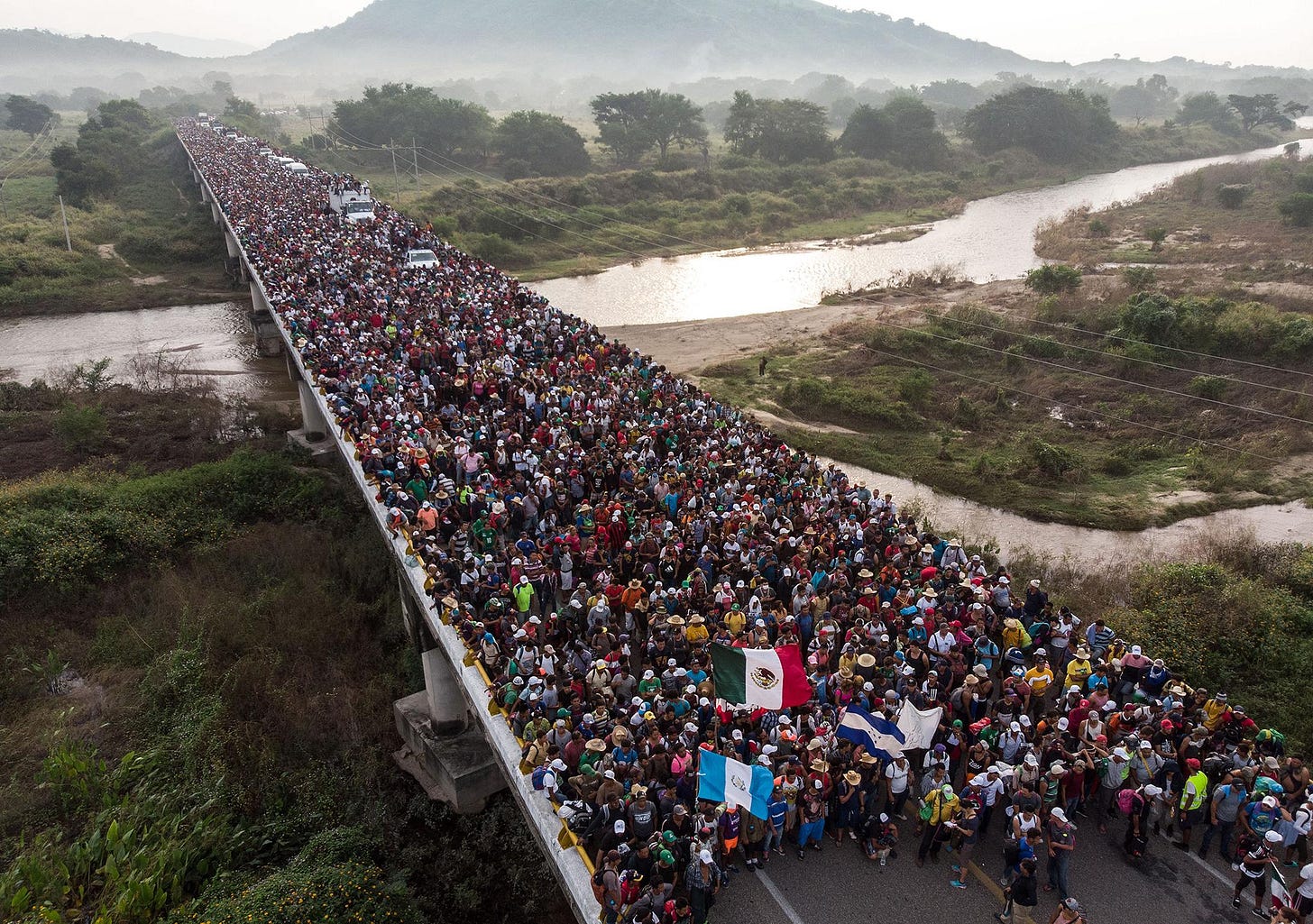How US Foreign Policy and Instability in Central America Factor Into the Migration Crisis
US interventions and instability in Central America drive families north despite the risks
5-Point Summary
Civil wars in the 1980s, fueled by US aid, left violence and weak governments in El Salvador, Guatemala, and Honduras.
Gangs, poverty, corruption, climate change disasters, and crime make life very hard for many people there today.
To seek safety and jobs, thousands try to migrate each year to the US border despite great dangers.
The trip is risky - migrants face criminals, cartels, the desert, and crowded detention centers. Some children have died.
Political tensions are rising in the US over immigration, but solving this requires helping Central America become more stable so people feel they can build their lives there.
The Gist
In the 1980s, the US gave weapons and aid to brutal wars in Central America between military dictators and rebel groups who wanted rights and land for the poor majority of peasants there. Although peace agreements happened later, these wars left countries like El Salvador, Guatemala, and Honduras with lots of criminals, gangs, poverty, corruption, and climate disasters destroying farms.
Life is so hard that many families feel they have to try to walk or ride over 3,000 kilometers to the United States border, seeking safety and jobs. But the trip is very dangerous - bad guys hurt and rob migrants. At the crowded US border, guards, jail families, and little kids sometimes get sick and die even after reaching the US. Angry politicians yell about immigration problems. Solving why so many make this frightening journey needs the US to help Central America finally heal and have less violence so its people feel they can build good lives in their home countries.

How a Painful History Fuels the Migration Crisis
Keep reading with a 7-day free trial
Subscribe to Three Sonorans: News from the Borderlands Resistance to keep reading this post and get 7 days of free access to the full post archives.


